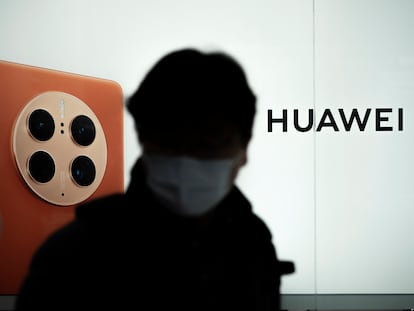6G telecommunications: How businesses are preparing for the new generation
The leap from 5G involves moving to a sensor-detecting network, but first, more work is needed to improve and extend existing capabilities

Even though 5G telecommunications hasn’t yet reached the whole world, more and more businesses are already discussing and preparing for 6G, the sixth-generation mobile system standard. Although 6G availability is not expected until 2030, the telecommunications industry is working on short-term improvements that will lead to 5G-Advanced, the next evolutionary step before 6G.
Major players in the industry are choosing diverse paths toward 6G. Huawei, for example, prefers to talk about 5.5G. “This cannot be skipped – it’s a prerequisite for 6G,” said Miguel Barroso, a 5G solution architect at Huawei. “With 5.5G, we are trying to multiply by a factor of 10 the 5G bandwidth target and attain 10 gigabytes. That will enable transmission of other types of content and much more powerful solutions. Another goal is to reduce network energy consumption by a factor of 10.”
At the Mobile World Congress (MWC2023) in late February, Huawei gave a sneak peek of some of its imminent technological developments. The Chinese company demonstrated how a logistics center can automate product inventory control using a chip similar to the alarm tags on today’s product boxes. “The chips are connected to a 5G network and automatically update inventories – no scanning is needed. We can even enable automatic payment through these passive, network-connected devices,” said Barroso.
The next step is implementing sensor detection technology, which most companies plan to integrate into 6G. Sensors in the network will detect any movement in the environment without needing people, animals or objects to carry a device, unlike the Global Positioning System (GPS). For example, Huawei is considering using network sensors to enhance safety in automobile traffic. “The network can detect accidents and warn drivers without using GPS. It could also detect intruders, such as an animal sneaking into an enclosure,” said Barroso. Huawei’s 5.5G technology will also enable 3D displays without using special glasses and video calls with simultaneous language translation.
The United States ban last year on the sale and import of new communications equipment from Huawei and other Chinese companies, citing security risks, may disrupt Huawei’s plans. But Barroso said the ban will have little impact on the company’s 5.5G development. “5.5G is still in the specification standardization process, and there is no product yet. Work is still underway to define the standards and demonstrate the technology’s viability.”
You can’t just throw away all the existing devices – you have to develop a smooth transition that can be rolled out graduallyJavier López, a network solutions architect at Samsung Networks Europe
To exploit the trepidation about Chinese technology companies, Samsung is deploying its networks in Europe, as it did in Japan, the United States and South Korea, where its headquarters are located. The company has already started these deployments in the United Kingdom and launched pilot programs in Germany and Spain to test network operations and ensure standard conditions for all operators. Samsung will focus on network virtualization and Open RAN (open radio access network), which enables service providers to use non-proprietary subcomponents from various vendors.
Javier López, a network solutions architect at Samsung Networks Europe, said: “Samsung has the significant advantage of an in-house chip production capability. Other vendors don’t have that.” The Korean company is working on shrinking chip size, lowering power consumption and designing 5G network radios to suit different customers, regions and frequencies. In the meantime, it’s also adapting existing infrastructure to 5G and 5G-Advanced. “You can’t just throw away all the existing devices – you have to develop a smooth transition that can be rolled out gradually,” said López.
Taiwanese companies can also exploit spaces where Huawei has difficulty playing. Taiwan’s robust technology and telecommunications sector isn’t hampered by the Chinese political interference that worries the United States. The American presence at MWC2023 included Pegatron, a company ASUS spun off years ago. Pegatron displayed a portable 5G network solution designed for easy mobilization to the scene of a natural disaster or other crisis. First responders at earthquakes and floods could transport the network box in a vehicle and quickly establish critical communications. During the Trump administration, Taiwanese companies began displacing Chinese companies (especially Huawei) as technology suppliers for Western countries.
In the race for 5G leadership, telecom companies are deploying networks as fast as possible. Once known for its mobile phones, Nokia has abandoned that line of business and now focuses only on network implementation and operation. Nokia’s main message at the Mobile World Congress was, “We’re a telecommunications company now.”
Like Huawei, Nokia is working on solutions for the industrial sector. Instead of automated inventory sensors, Nokia is developing a drone that can scan an entire warehouse row of merchandise in one sweep, significantly reducing inventory time and eliminating manual intervention.
Nokia’s Customer CTO, Gloria Touchard, said: “We’re not going to see 6G until 2030, but we’re developing specifications and defining use cases right now. We’re going to move from a communications network to a sensory network. These 6G networks will have permanently active sensors, enabling a corresponding reaction for any movement detected.” Touchard said this is a giant leap, and there is still a long way to go. Even so, Nokia demonstrated the potential of 6G by having a pedestrian walk around at the Mobile World Congress without a cell phone or any other device. Antennas detected and reported the pedestrian’s every movement.
Like its competitors, Nokia is also working in parallel on 5G-Advanced. Touchard said these networks will provide “functionality to manage Internet of Things (IoT) devices, which don’t consume much bandwidth but need high-speed network access. They also have improved capabilities for supporting IoT devices and augmented reality applications that need to download and upload huge volumes of data.”
Despite all the progress on 5G, Touchard cautions that the pace of adoption is set by people’s devices. “You can deploy all the infrastructure, but it might not be used. In places like South Korea, the percentage of devices that support 5G is very high, so adoption has been very high. Americans also replace their mobile devices frequently and adopt new technology quickly. It’s a little slower in Europe.” Another time-consuming process is licensing and obtaining the bandwidth spectrum concessions granted by national regulators. These regulatory procedures explain why some countries are taking longer to deploy 5G networks and others haven’t even started, even though 6G is already on the horizon.
Sign up for our weekly newsletter to get more English-language news coverage from EL PAÍS USA Edition
Tu suscripción se está usando en otro dispositivo
¿Quieres añadir otro usuario a tu suscripción?
Si continúas leyendo en este dispositivo, no se podrá leer en el otro.
FlechaTu suscripción se está usando en otro dispositivo y solo puedes acceder a EL PAÍS desde un dispositivo a la vez.
Si quieres compartir tu cuenta, cambia tu suscripción a la modalidad Premium, así podrás añadir otro usuario. Cada uno accederá con su propia cuenta de email, lo que os permitirá personalizar vuestra experiencia en EL PAÍS.
¿Tienes una suscripción de empresa? Accede aquí para contratar más cuentas.
En el caso de no saber quién está usando tu cuenta, te recomendamos cambiar tu contraseña aquí.
Si decides continuar compartiendo tu cuenta, este mensaje se mostrará en tu dispositivo y en el de la otra persona que está usando tu cuenta de forma indefinida, afectando a tu experiencia de lectura. Puedes consultar aquí los términos y condiciones de la suscripción digital.
More information
Archived In
Últimas noticias
Pinochet’s victims grapple with José Antonio Kast’s rise in Chile
Reinhard Genzel, Nobel laureate in physics: ‘One-minute videos will never give you the truth’
From digital curfews to blocking apps: How technology experts protect their children online
Why the price of coffee has skyrocketed: from Brazilian plantations to specialty coffee houses
Most viewed
- Pablo Escobar’s hippos: A serious environmental problem, 40 years on
- Why we lost the habit of sleeping in two segments and how that changed our sense of time
- Trump’s obsession with putting his name on everything is unprecedented in the United States
- Charles Dubouloz, mountaineering star, retires at 36 with a farewell tour inspired by Walter Bonatti
- The Florida Keys tourist paradise is besieged by immigration agents: ‘We’ve never seen anything like this’











































